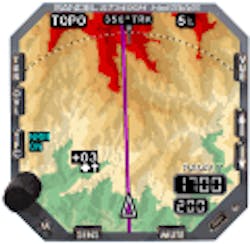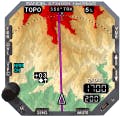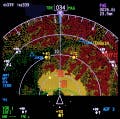Helicopter terrain avoidance systems (HTAWS) to be required by FAA for air ambulances
By Charlotte AdamsWASHINGTON, 4 Nov. 2010. The Federal Aviation Administration (FAA) issued a notice of proposed rulemaking (NPRM) that would require helicopter air ambulance operators to make significant changes in equipage, infrastructure, and procedures. While operators avoided mandates for autopilots and night vision goggles (NVGs), as the National Transportation Safety Board had wished, they will have to equip with approved terrain avoidance systems (TAWS) if the NPRM goes through as written.
While supplying whole cockpits to the business aviation market, Honeywell emphasizes the interoperability of its HTAWS products with third-party displays. The more sophisticated MK XXII sells for about $55,000 and the MK XXI for about $16,000, excluding the cost of installation. MK XXII and MK XXI features correspond respectively to Class A and Class B characteristics, as defined by TSO C-151b, the earlier TSO.


